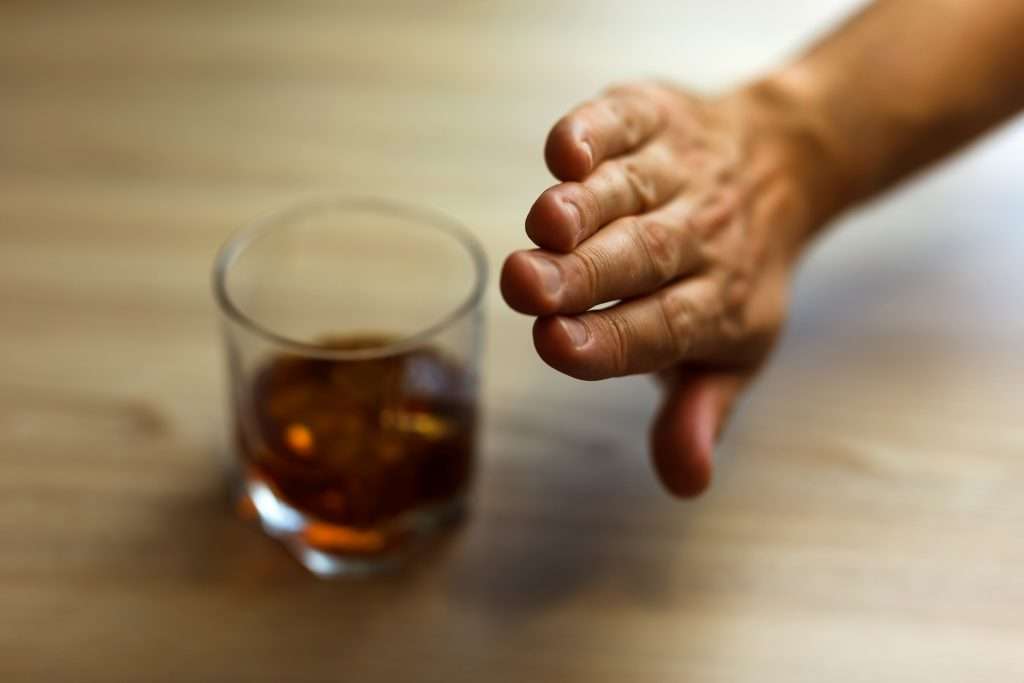Canadian men are 3.6% more likely to drink alcohol than their female counterparts. However, Canadian women are at a higher risk of negative health consequences from drinking. Recent research has uncovered important information regarding alcohol and women’s health. Today, we present a sobering guide for women who drink to help you understand these risks. Read on to understand the potential effects of drinking as a woman, how much alcohol is too much, and when it is time to seek treatment for alcoholism at a rehab facility in Ontario.
Table of Contents
A Sobering Guide for Women Who Drink:
The Effects of Alcohol in Midlife on Women
People who drink alcohol regularly or excessively are at a higher risk of health complications. Factors like ageing can increase the risk further. For example, being a middle-aged drinker increases someone’s risk for:
- Hypertension
- Ischaemic diseases
- Pulmonary diseases
- Cerebrovascular diseases
- Malnutrition
- Metabolic disorders
- Cancer
- The flu
- Pneumonia
Studies have found fewer but significant correlations between gender and alcohol use-related health disorders. For instance, women who drink heavily have a higher risk for viral hepatitis (liver inflammation).
Still, age is the most important factor when evaluating drinking habits. Age can impact how the body responds to alcohol and make alcohol-related health complications like the above more likely.
Age-Related Changes and Alcohol’s Effects
Ageing changes the way alcohol affects the body. The most common changes are regarding alcohol metabolism, intoxication, and hangovers.
The body’s ability to metabolize substances like alcohol becomes less effective with age. As a result, the kidneys and liver cannot eliminate alcohol from the bloodstream as quickly.
When the body can’t eliminate alcohol as fast, that leaves more in the bloodstream. The slower the body breaks it down, the more intoxicated someone will feel and for longer.
Older people also have lower body water content than younger people. They may feel more intense hangovers. Many experts believe these symptoms are primarily due to dehydration.
Alcohol’s Effects on Age-Related Health Conditions
The conditions we listed above are not the only health effects people who drink regularly or excessively should worry about.
Women who drink also have to worry about worsening pre-existing health conditions. For example, studies show that alcohol may exacerbate symptoms of arthritis, diabetes, stomach ulcers, and even memory loss.
Memory loss is just one of the potential cognitive effects of drinking as we age. Mental health disorders can worsen with chronic drinking. Women should note this risk since they already experience higher rates of mental health issues.
Additionally, middle-aged and older adults are more likely to take prescription medications. Mixing alcohol and prescriptions can be a dangerous combination. In some cases, combining substances can even be deadly.
What Are the Signs It May Be Time to Quit?
The signs it may be time to quit drinking are different for everyone. Still, they may include uncontrollable alcohol use, negative social or health consequences, and the presence of alcohol tolerance or cravings.
The above symptoms may indicate an alcohol use disorder (AUD). People concerned that they may need to quit drinking should look out for common signs that include but are not limited to:
- Needing to drink more and more alcohol to achieve the same effects (i.e., tolerance)
- Spending significant amounts of time drinking or recovering from the effects of drinking (e.g., being hungover)
- Making multiple attempts or wanting to quit or cut back on drinking without success
Withdrawal symptoms are a top reason people struggle to quit or reduce their drinking. We will discuss what withdrawal symptoms are and what they look like next.
Alcohol Withdrawal Symptoms
Alcohol withdrawal symptoms can occur when someone who drinks regularly and, often, heavily suddenly stops drinking. Withdrawals can also happen just from cutting back on alcohol use.
These symptoms may be mild, moderate, or severe. Yet, regardless of their extreme, withdrawal symptoms can make reducing or stopping drinking difficult.
Learn more about mild to severe alcohol withdrawal symptoms below.
Mild Alcohol Withdrawal Symptoms
Mild alcohol withdrawal may begin as soon as six hours after someone takes their last drink and may last a few days to a couple of weeks. These symptoms are uncomfortable. However, they are not typically a medical emergency.
Common mild symptoms of quitting alcohol are:
- Insomnia
- Tremors (i.e., ‘the shakes’)
- Anxiety
- Hyperreflexia (i.e., overactive reflex responses)
- Gastrointestinal (GI) issues like nausea and vomiting
- Headaches
- Heart palpitations
- High blood pressure
Readers may recognize many of these as typical hangover symptoms. GI issues, headaches, and tremors are common the day after heavy drinking. Some experts believe that hangovers are mini-withdrawals.
Moderate to Severe Alcohol Withdrawal Symptoms
12 to 24 hours after someone stops using alcohol, they may start to experience moderate withdrawal symptoms. These symptoms are more extreme. They may include hallucinations and seizures.
Some individuals will progress to more severe and life-threatening symptoms. For example, around 50% of alcoholics who experience alcohol withdrawal seizures will experience develop delirium tremens (DT).
DT is the most severe alcohol withdrawal symptom. It is a type of psychotic condition which may feature:
- Hallucinations
- Agitation
- Tachycardia (rapid heart rate)
- Hyperthermia (high body temperature)
- Diaphoresis (extreme sweating)
This symptom can last up to a week and be deadly if the person does not receive prompt medical care. In some cases, failing to treat DT can make the condition permanent.
Tips to Reduce Alcohol Consumption
Not ready to quit drinking? A helpful first step toward an alcohol-free life is reducing daily consumption. Going slow can help people avoid painful withdrawal symptoms.
Here are some tips to start the journey toward sobriety today.
Track How Much You Are Drinking
Many people who drink regularly have no idea how much alcohol they consume. Tracking their daily intake can help women identify their baseline and support goal setting.
Ideally, women should track how much alcohol they drink per day. That may require measuring beer, wine, and liquor volumes and comparing them to Canada’s standard alcoholic beverage guidelines.
Set Daily Drinking Limits
Once someone knows how much they drink a day, they can begin to set alcohol limits. A goal to shoot for is to adhere to Canada’s low-risk alcohol drinking guidelines for women:
- 2 standard drinks per day
- 10 standard drinks per week
- No more than 3 standard drinks on special occasions
- Taking breaks from drinking alcohol some days out of the week
It can be challenging to adhere to these guidelines for some heavy drinkers. Start slowly by cutting back by one drink per day. Create a plan to slash another daily drink the following month and another the month after.
Ask an Accountability Partner for Help
Studies show that people are 95% more successful when they use an accountability partner to stay on track. Accountability partners are friends or family members who support their loved one’s goals.
Designate weekly check-ins with an accountability partner for the best results. Always practice honesty when working with accountability partners, or the process will be less effective.
Cut Back on Stress, Loneliness, and Other Triggers
Identifying and avoiding drinking triggers is another great way to cut back. Stress, loneliness, and even thirst can make someone crave alcohol. Emotions like anger can also trigger a night of binge drinking.
Also, remember that seeing people, visiting places, and being around alcohol can trigger a relapse. Cutting ties with people, places, and things that are reminders of drinking can help.
Get Professional Help If You Need It
Sometimes, withdrawal symptoms and cravings are too severe to deal with. When that happens, an alcohol treatment programme may be the best approach to reducing alcohol intake.
Facilities like Simcoe offer alcohol addiction treatment in Ontario. We have inpatient programmes and withdrawal management services to help people begin their journeys toward an alcohol-free life.
We also offer mental health treatment. Women who drink to self-medicate undiagnosed mental health issues may benefit from this treatment alongside their addiction programme.
Living an Alcohol-Free Lifestyle
While this is a sobering guide for women who drink alcohol, we want to end positively.
An alcohol-free lifestyle can help women worried about the negative consequences of drinking alcohol. Women can achieve better health and harness additional benefits like:
- Better sleep
- Improved mood
- Younger-looking skin
- Weight loss
- More energy
Living life without alcohol can also free up extra time and energy to spend with family and friends. Plus, not drinking alcohol will free up finances to take a vacation, go to therapy, or partake in a wellness retreat.
Going alcohol-free can also help with confidence, self-respect, and quality of life. Sobriety may be just what many women need to feel better about themselves and the lives they live.
Start the Journey to Alcohol Addiction Recovery
This is a sobering guide for women who drink, but we hope it has inspired you to make a change. Ageing women are at risk for experiencing the negative consequences of regular drinking. Yet, there are ways to improve your health and quality of life.
Are you ready to quit drinking or seeking more information about alcohol and women’s health? Simcoe Addiction and Mental Health is here to help. Contact us for more information and resources to guide your journey.


